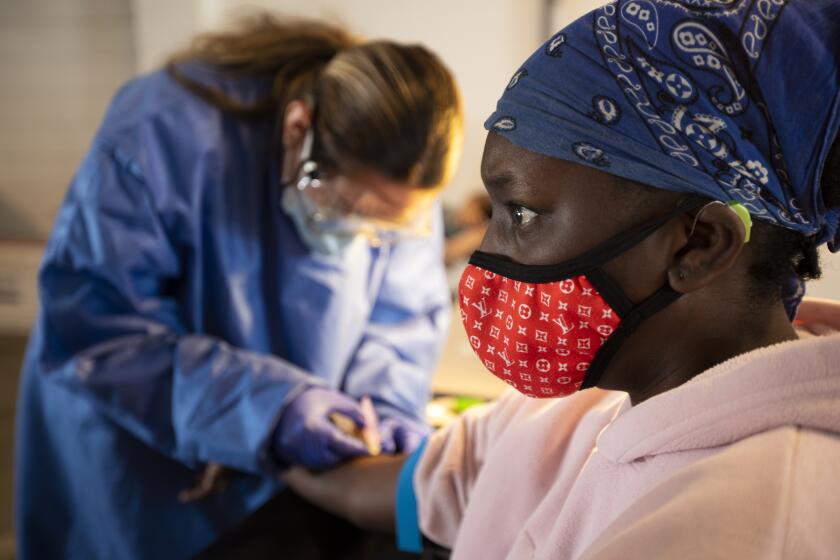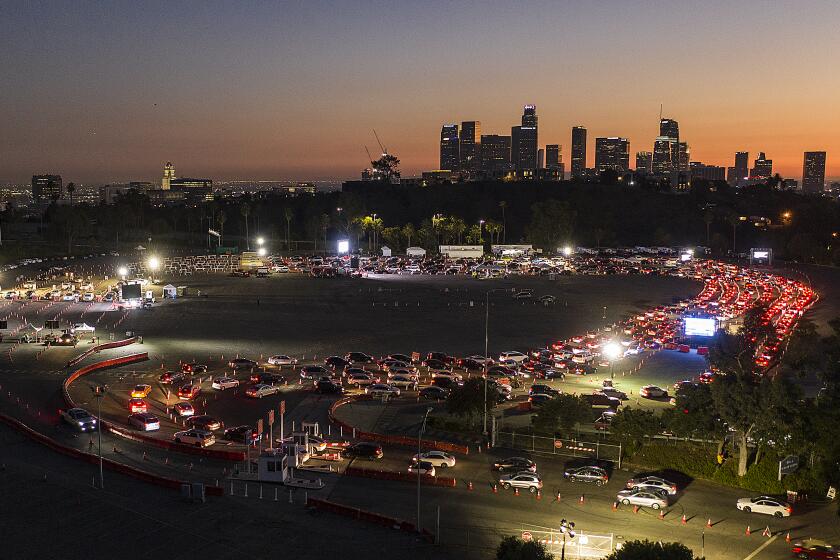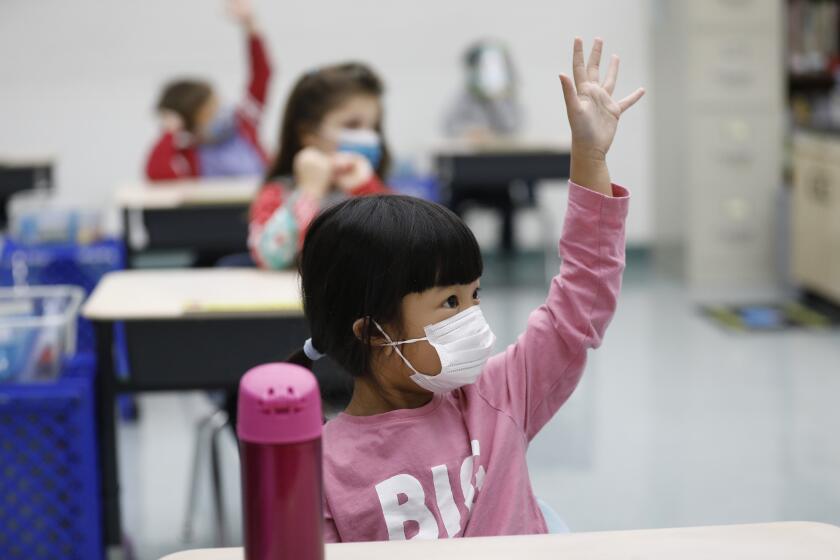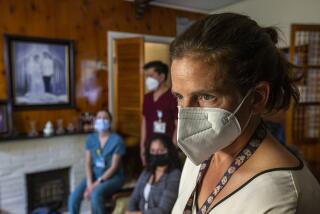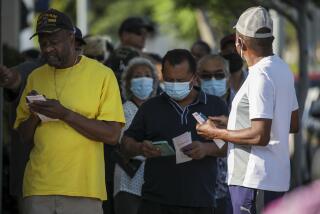New coronavirus surge pushes California to the brink of 1 million cases
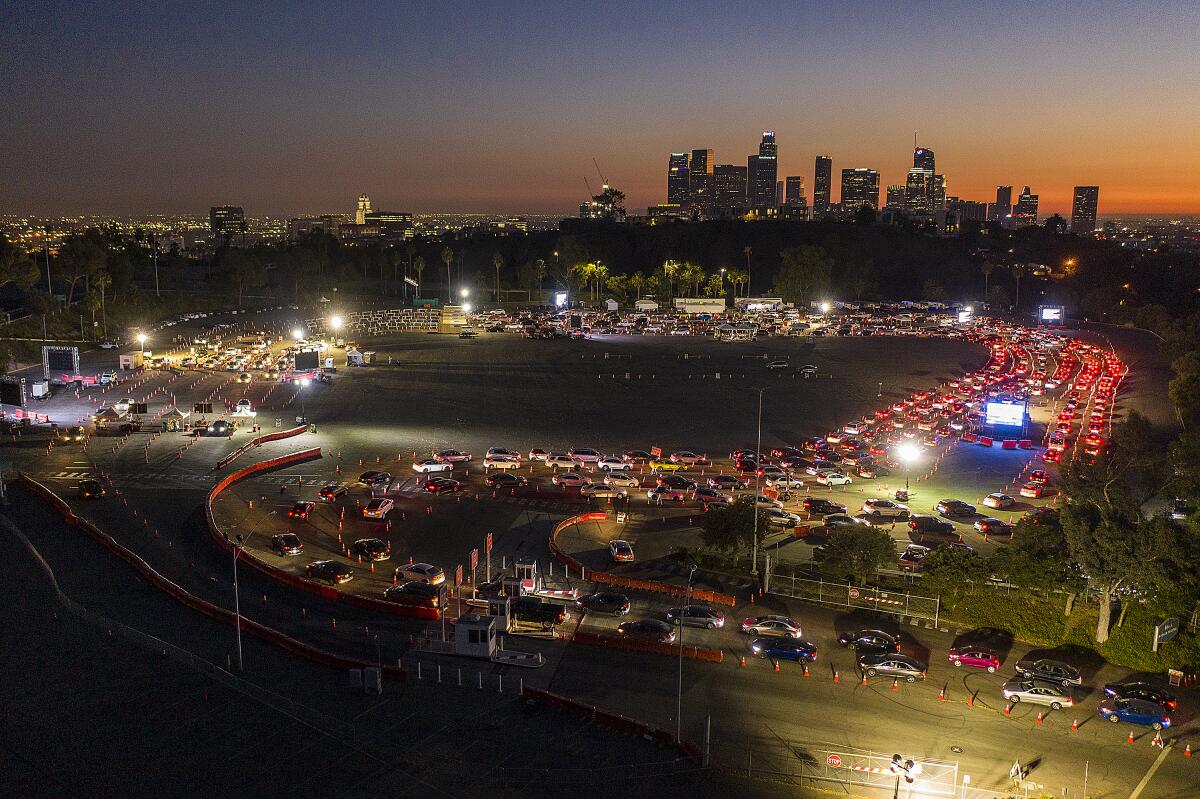
California is on the cusp of surpassing 1 million confirmed coronavirus infections — a milestone demonstrating both the toll the pandemic has taken so far and the dangers it continues to pose.
As of Wednesday, amid a continuing surge, California had reported just over 993,000 total coronavirus cases, according to the Los Angeles Times’ tracker.
The state has averaged 6,377 new cases per day over the last week, Times’ data show, including 8,307 on Tuesday. That rate, far higher than a month ago, puts California on pace to surpass the 1-million mark by Thursday.
Only one other state, Texas, has reached that threshold.
Although California’s coronavirus case counts have stormed back into worrying territory as of late, officials say they are particularly concerned about what may come next.
Hospitalizations and deaths are lagging indicators of coronavirus spread and can reflect exposure to the virus that occurred weeks earlier.
Those who have been infected during the latest spike “won’t become patients in hospitals for another two to three weeks,” according to California Health and Human Services Secretary Dr. Mark Ghaly.
Even so, the number of patients has already started to climb. Starting in late July, California recorded 12 consecutive weeks of declining hospitalizations related to coronavirus infections. But that began to change last month.
There were 3,224 COVID-19 patients hospitalized in California as of Tuesday — an increase of roughly 38% from two weeks ago, according to the latest state data. The number of infected patients in intensive care, 889, is up 34% from two weeks ago.
In the unprecedented regression, San Diego County is among those that slide backward in the state’s reopening tiers Tuesday.
Conducting more tests can push case numbers higher, but California has also seen an uptick in the proportion of tests that are confirming coronavirus infection. That metric, called the positivity rate, has been 3.8% over the last 14 days and 4.3% in the last seven.
“We hadn’t seen test positivities above 4 since the end of August, early September,” Ghaly said this week.
The statewide trends are also playing out locally in Los Angeles County. Health officials there reported 2,152 new coronavirus cases Wednesday — the sixth time in the last week that the county’s daily total has exceeded 2,000.
COVID-19 hospitalizations have also steadily risen in the county, from 825 last Thursday to 903 as of the latest tally.
With the nation celebrating Veterans Day on Wednesday, county Public Health Director Barbara Ferrer noted in a statement that “more than 4,200 veterans have passed away from COVID-19 nationwide.
County residents can “honor, celebrate and protect our veterans by doing our part to stop the spread of COVID-19,” she said.
The latest maps and charts on the spread of COVID-19 in Los Angeles County, including cases, deaths, closures and restrictions.
The climbing case counts and hospitalization numbers have sparked new concerns that California is trending in the wrong direction heading into what officials have said could be a particularly dangerous period.
As temperatures fall and the holiday season approaches, experts have warned residents not to put themselves in high-risk situations where the coronavirus can more easily spread.
Of particular concern are lengthy indoor activities where people don’t wear masks or observe physical distancing.
A winter surge of COVID-19 is now unavoidable, experts say, though its magnitude depends on what we do next. Hundreds of thousands of lives hang in the balance.
Participating in gatherings with those you don’t live with — even family members or trusted friends — can heighten the risk for coronavirus transmission, officials warn.
“Just because they’re close to us personally doesn’t mean that they have a lower risk of either passing COVID onto you or having COVID come from you to them,” Ghaly said. “So we want to be very careful not just with those we don’t know from outside of our household, but even those that we know quite well.”
The stakes, officials say, are too high for residents to ignore — particularly if California is to avoid the skyrocketing infection rates besieging many other parts of the country.
Schools reopen during coronavirus, COVID pandemic
The U.S. as a whole hit a record number of COVID-19 hospitalizations Tuesday and surpassed 1-million new confirmed coronavirus cases in just the first 10 days of November.
For the first time, Los Angeles residents received an emergency text alert from the city Tuesday evening warning that cases were increasing.
Mayor Eric Garcetti also said that testing centers across L.A. would have extended hours. Several will be open from 8 a.m. to 4 p.m., with Dodger Stadium open from 8 a.m. to 8 p.m.
The text alert and the increasing number of cases “should be a bright flashing light to all of us to control our behavior,” he added.
Ghaly said it was understandable that “many people feel exhausted; they feel isolated and they’re impatient.”
Although this week’s news about a promising new vaccine could be helpful down the road, “we know right now we must do more,” he said. “The virus is not over just because we’re tired of it.”
Can you have Thanksgiving during the COVID-19 pandemic? Researchers have created an interactive map that estimates the risk you’ll face in any county.
As case counts continue to shoot upward, officials on Tuesday announced that 11 counties had moved back to more restrictive tiers in California’s coronavirus reopening system.
Among them were San Diego, Sacramento and Stanislaus counties, all of which moved into the purple tier, the strictest category.
Many businesses, such as restaurants, gyms and movie theaters, will now have to move their operations outdoors — an unwelcome and potentially untenable limitation for sectors that have already been walloped by coronavirus-related restrictions.
“Some restaurants are at a do-or-die situation, while some can survive with outdoor seating and to-go orders,” restaurant owner Ben Clevenger, who is also president of the San Diego chapter of the California Restaurant Assn., told the San Diego Union-Tribune. “I know of a few businesses who don’t have a choice and are going to have to stay open indoors. If they don’t, they’ll lose their business anyway, so they might as well go down fighting.”
More counties are at risk of regressing, too.
“We anticipate, if things stay the way they are, that between this week and next week, over half of California counties will have moved into a more restrictive tier,” Ghaly said.
Times staff writers Alejandra Reyes-Velarde, Rong-Gong Lin II and Iris Lee contributed to this report. The Associated Press also contributed.
More to Read
Sign up for Essential California
The most important California stories and recommendations in your inbox every morning.
You may occasionally receive promotional content from the Los Angeles Times.
